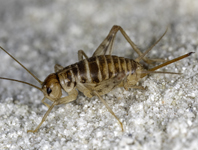Abstract
The water mite taxon Scutobates Cook, 1966 was originally described from Liberia, and treated by Cook (1966) as a subgenus of Hygrobates Koch, 1837. One of the most striking characters of Scutobates is the absence of a dorsal furrow, a ring or partial ring of unsclerotised cuticle between the dorsal plate or closely fitting platelets and the ventral shield. In the Hygrobatidae, secondary sclerotization, where the integument of the idiosoma other than the coxae, gnathosoma, genital field and glandularia bases, hardens to form sometimes extensive and merging plates can be extensive. For example, in the genus Thoracohygrobates Lundblad, 1936 the secondary sclerotization extends from the venter laterally onto the dorsum leaving a strip of membranous integument, but there is no dorsal plate development and therefore no dorsal furrow (Cook 1974). In Scutobates, the dorsum is completely sclerotized and seamlessly merges with the venter. The absence of a dorsal furrow on a completely sclerotized watermite is very rare.
References
Cook, D.R. (1966) The water mites of Liberia. Memoirs of the American Entomological Institute, 6, 1–418.
Cook, D.R. (1974) Water mite genera and subgenera. Memoirs of the American Entomological Institute, 21, 1–860.

